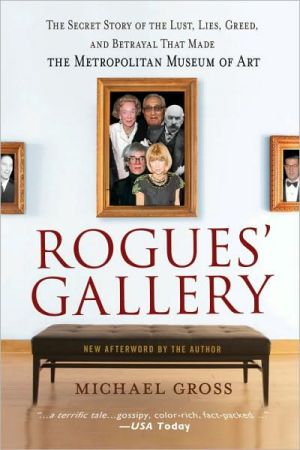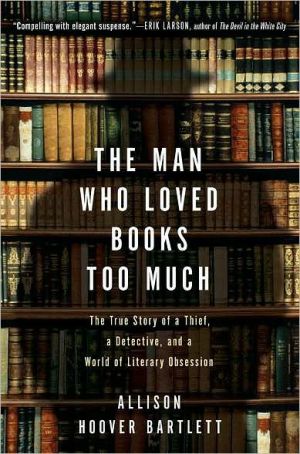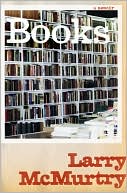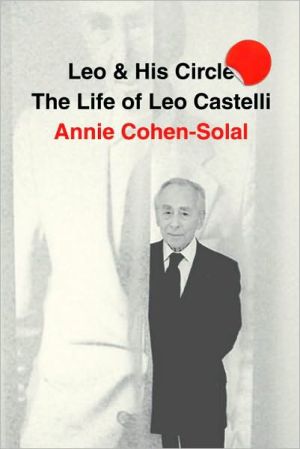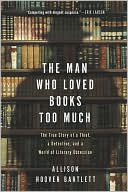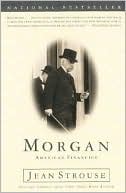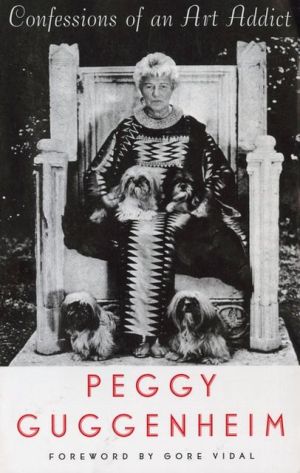Rogues' Gallery: The Secret Story of the Lust, Lies, Greed, and Betrayals that Made the Metropolitan Museum of Art
Michael Gross brings us an unprecedented, unauthorized look inside the nation's greatest museum, the Metropolitan Museum of Art, in this endlessly entertaining follow-up to his bestselling social history 740 Park. Gross pulls back the shades on the world of cultural philanthropy and paints a portrait of the hidden face of American wealth and power so frank and revealing that it provoked what Liz Smith called "a firestorm of controversy."\ Rogues' Gallery covers the entire history of the Met,...
Search in google:
“Behind almost every painting is a fortune and behind that a sin or a crime.” With these words as a starting point, Michael Gross, leading chronicler of the American rich, begins the first independent, unauthorized look at the saga of the nation’s greatest museum, the Metropolitan Museum of Art. In this endlessly entertaining follow-up to his bestselling social history 740 Park, Gross pulls back the shades of secrecy that have long shrouded the upper class’s cultural and philanthropic ambitions and maneuvers. And he paints a revealing portrait of a previously hidden face of American wealth and power.The Metropolitan, Gross writes, “is a huge alchemical experiment, turning the worst of man’s attributes—extravagance, lust, gluttony, acquisitiveness, envy, avarice, greed, egotism, and pride—into the very best, transmuting deadly sins into priceless treasure.” The book covers the entire 138-year history of the Met, focusing on the museum’s most colorful characters. Opening with the lame-duck director Philippe de Montebello, the museum’s longest-serving leader who finally stepped down in 2008, Rogues’ Gallery then goes back to the very beginning, highlighting, among many others: the first director, Luigi Palma di Cesnola, an Italian-born epic phony, whose legacy is a trove of plundered ancient relics, some of which remain on display today; John Pierpont Morgan, the greatest capitalist and art collector of his day, who turned the museum from the plaything of a handful of rich amateurs into a professional operation dedicated, sort of, to the public good; John D. Rockefeller Jr., who never served the Met in any official capacity but who, during the Great Depression, proved the only man willing and rich enough to be its benefactor, which made him its behind-the-scenes puppeteer; the controversial Thomas Hoving, whose tenure as director during the sixties and seventies revolutionized museums around the world but left the Met in chaos; and Jane Engelhard and Annette de la Renta, a mother-daughter trustee tag team whose stories will astonish you (think Casablanca rewritten by Edith Wharton).With a supporting cast that includes artists, forgers, and looters, financial geniuses and scoundrels, museum officers (like its chairman Arthur Amory Houghton, head of Corning Glass, who once ripped apart a priceless and ancient Islamic book in order to sell it off piecemeal), trustees (like Jayne Wrightsman, the Hollywood party girl turned society grand dame), curators (like the aging Dietrich von Bothmer, a refugee from Nazi Germany with a Bronze Star for heroism whose greatest acquisitions turned out to be looted), and donors (like Irwin Untermyer, whose collecting obsession drove his wife and children to suicide), and with cameo appearances by everyone from Vogue editors Anna Wintour and Diana Vreeland to Sex Pistols front man Johnny Rotten, Rogues’ Gallery is a rich, satisfying, alternately hilarious and horrifying look at America’s upper class, and what is perhaps its greatest creation.Style.comRogues' Gallery: The Secret History of the Moguls and the Money that Made the Metropolitan Museum, has all of New York talking.
On a chilly winter day, early in 2006, I sat in the office of Philippe de Montebello, then director of the Metropolitan Museum of Art (he would announce his retirement two years later). Montebello is generally considered, even by his most fervent admirers, a little arrogant, a touch on the pompous side, and his mid-Atlantic Voice of God (well-known from his Acoustiguide tours of exhibitions) does nothing to dispel the impression of a healthy self-regard. So I was nervous; I was there to discuss my plan to write an unauthorized book about the museum and to ask for his support, or, at least, his neutrality.\ He wasn’t happy to see me.\ Ever since its founding, the Metropolitan has bred arrogance, hauteur, hubris, vanity and even madness in those who live in proximity to its multitude of treasures and who have come to feel not just protective but possessive of them. “Being involved with it made you special to the outside world,” says Stuart Silver, for years the museum’s chief exhibition designer. “It was a narcotic. You were high all the time.”\ The Metropolitan is more than a mere drug, though. It is a huge alchemical experiment, turning the worst of man’s attributes—extravagance, lust, gluttony, acquisitiveness, envy, avarice, greed, egotism and pride—into the very best, transmuting deadly sins into priceless treasure. So the museum must be seen as something separate from the often imperfect individuals who created it, who sustained it and who run it today, something greater than the sum of their myriad flaws.\ Without taking anything away from The Louvre or the Orsay in Paris, Madrid’s Prado, St. Petersburg’s Hermitage, The British Museum (which has no pictures), Britain’s National Gallery (which has only pictures and sculpture), the Vatican in Rome, the Uffizi in Florence, Vienna’s Kunsthistoriches Museum, the Art Institute of Chicago, Berlin’s Pergamon, Amsterdam’s Rijksmuseum, the Smithsonian Institute and its National Gallery of Art, the Museum of Fine Arts in Boston, the Getty in Malibu or other vital New York museums like the Whitney, the Guggenheim, and the Museum of Modern Art, the Metropolitan is simply (and at the same time not at all simply) the most encyclopedic, universal art museum in the world.\ In Montebello’s office that day, he’d been slumped sullenly in his chair as I made my pitch, but straightened up as I finished. “You are laboring under a misimpression,” he told me. “The museum has no secrets.”\ \ From its inception, oversized personalities have dominated the Metropolitan; many loom large in American history, too. John Jay, grandson of the first Chief Justice of the Supreme Court, first conceived of it. William Cullen Bryant, the orator, poet, journalist, publisher and club man was one of the most eloquent advocates of the museum’s creation. In recent times, its board heads have been some of America’s most powerful men: in the 1930s, George Blumenthal, who headed Lazard Frères; in the 1960s, C. Douglas Dillon, John F. Kennedy’s Secretary of the Treasury; in the 1970s, Robert Lehman, the head of Lehman Brothers and in the 1980s, Arthur Ochs “Punch” Sulzberger, the chairman of The New York Times.\ Some of these characters defined distinct eras in the museum’s colorful history. Luigi Palma di Cesnola, named the first director by the mostly self-made founders, was an Italian count, a Civil War veteran given to inflating his rank, an American diplomat and an amateur archaeologist, some of whose finds from Cyprus remain treasures in the museum’s collections today; his excesses mark it still. J. Pierpont Morgan is credited with turning the Met from a semi-private clubhouse for the trustees into a professional operation.\ Following Morgan and dominating throughout the mid-20th century, though never serving as a trustee or officer, John D. Rockefeller Jr. was quietly its greatest benefactor and his relationship with James Rorimer, the sixth director, was a model for the symbiosis between the rich and the scholarly that made the Met blossom even more after Morgan. Hoving, a scholar but also a showman like Cesnola, was appointed by a board of trustees led by a group of gun-slinging veterans of John F. Kennedy’s New Frontier administration; he re-invented the Met, and in the process redefined all museums during his mere ten years as director, beginning in 1966.\ Ever since the beginning, the Met has been a political, cultural and social spectacle, especially when all three come together in the cauldron of fundraising. Then the fun really begins. You can get a seat on the board by wielding power (like Henry Kissinger, who was recruited to lend geopolitical savvy), or waving your family bloodline or corporate flag (among the Met’s brand-name trustee dynasties have been Morgans, Astors, Whitneys, Rockefellers, Annenbergs, Houghtons and various representatives of the Lazard Frères investment bank) or possessing a useful skill (like any number of financiers, developers and the media titans Reid, Luce, and Sulzberger). But money counts most of all: a commitment to donate six figure sums every year, or to twist the arms of other potential givers. “Give, get, or get out,” is the rule.\ \ Back in Philippe de Montebello’s office, I wound up my pitch for the museum’s cooperation… and left the room shortly after with the distinct feeling that I was on my own. For I already knew that a curtain of secrecy had been hung over the museum long before Montebello’s time. With the stakes so high and the money and egos involved so big, the Met has always had to operate in the shade, whether it was acquiring art under questionable circumstances, dealing with donors hoping to launder very sketchy reputations, or merely trying to appear above reproach in a world where behind almost every painting is a fortune and behind that, a sin or a crime. The Metropolitan Museum is a storehouse of human memory. But it appeared, that day at least, it would just as soon its own be erased.
Leaders of the Metropolitan Museum xiIntroduction 1Archaeologist 1870-1904 Luigi Palma di Cesnola 21Capitalist 1904-1912 J. Pierpont Morgan 65Philanthropist 1912-1938 John D. Rockefeller Jr 113Catalyst 1938-1960 Robert Moses 171Exhibitionist 1959-1977 Thomas P. F. Hoving 237Arrivistes 1974-2009 Jane Annette Engelhard 373Afterword 487Acknowleldgments 497Notes 501Bibliogoraphy 533Index 539
\ George Christy. . . a pageturner that unravels like an elite whodunit, and is reaping encomiums from advance readers. Destined to be the talk of art circles in the U.S. and abroad. . . . Not only by art connoisseurs but by culturati hungry for a captivating, tattle-tale yarn, Rogues' Gallery will spark a furor. \ — The Beverly Hills Courier\ \ \ \ \ BooklistGross relishes every nefarious or audacious episode as he marches through the museum's fascinating history of curatorial excellence, social climbing, and skulduggery. It' s a tale of elitists versus populists, of spectacular gifts and scandals, trustees refusing to consider art made by living artists and formidable innovators, especially Robert Moses and Thomas Hoving. Whether he is portraying the museum's first director, the scoundrel Luigi Palma di Cesnola, John D. Rockefeller (the museum's "greatest benefactor"), curator Henry Geldzahler, Diana Vreeland of the Costume Institute, or, in the most sordid chapter, vice chairman Annette de la Renta, Gross zestfully mixes factual reportage with piquantly entertaining anecdotes. —Donna Seaman\ \ \ New York Times Book ReviewA blockbuster exhibition of human achievement and flaws.\ \ \ \ \ Manuela HoelterhoffHighly entertaining. \ — Bloomberg\ \ \ \ \ Vanity FairMichael Gross hangs the eccentric and dazzlingly rich characters behind the Metropolitan Museum of Art.\ \ \ \ \ Melik KaylanAny and all facts that I knew of personally, the author gets absolutely right, which makes me trust much else in the book-and there's a great deal else, indeed an entire history of the museum beginning from its gradual birth in the 1870s, told as a kind of extended gossip dish, a dense and exhaustively factual one, about the powerful egos that drove it into prominence and kept it there. I am not particularly sympathetic to any view of the world as a gossipy chronicle. I didn't expect to like the book's tone, but I found a good 100 pages had gone by before I could even put it down. . . . The book is important, and what's more, splendidly readable. \ — Forbes.com\ \ \ \ \ David Patrick Columbia. . . destined to be a must-read amongst the cognescenti, not to mention the art world.\ — New York Social Diary\ \ \ \ \ Maria PuenteGross demonstrates he knows his stuff. It's a terrific tale, with all the elements of a gossipy, color-rich, fact-packed Vanity Fair-style takedown. \ — USA Today\ \ \ \ \ Reid PillifantProvocative. \ — New York Observer\ \ \ \ \ Jillian SteinhauerGross' s coup is not only in the vast amounts of information he has obtained but also in his ability to tell a story about the rich and powerful people of New York nearly effortlessly and without disdain. \ — ArtInfo.com\ \ \ \ \ Style.comRogues' Gallery: The Secret History of the Moguls and the Money that Made the Metropolitan Museum, has all of New York talking.\ \ \ \ \ Rush & Molloy. . . a must-read. \ — New York Daily News\ \
